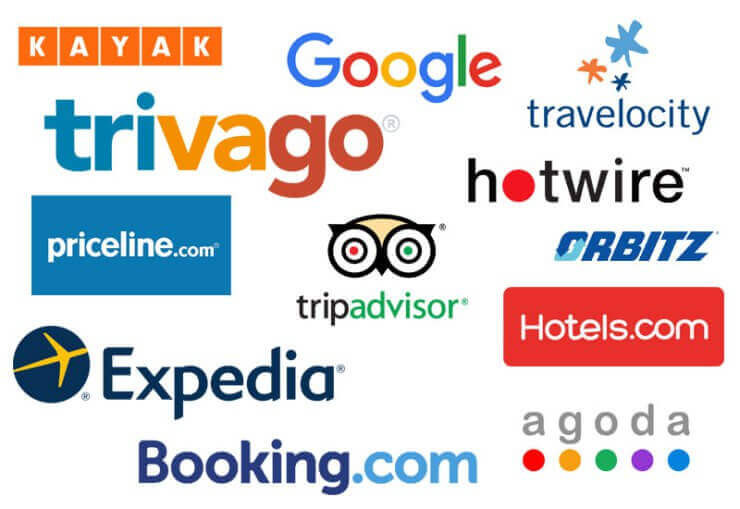
As digital experts in the hospitality industry, a question we often get asked is “How can I drive more direct bookings” or “How can I take business away from the OTA’s?”.
NB: This is an article from Screenpilot
You might have guessed it: You’ve got to pay to play.
Having a robust digital strategy not only allows for potential guests to easily find your property but allows you to properly compete with OTA’s within the various digital channels. Because metasearch only shows up when a user searches for your property name specifically, it is an ever-evolving and powerful tool that can do both: increase direct bookings and take business away from competitors.
Any hotel can participate in metasearch. It’s based on a CPC model, so allotting a monthly budget to metasearch allows you to compete within a particular metasearch channel for a customers business.
Once deciding to run Metasearch as part of your digital marketing channel mix, below is a strategy starting-point based on our 2018 data.
Are you an urban or resort property?
Many things differentiate urban properties from resorts.
Everything from the audience, location, purpose of travel…the list goes on. An important differentiator is the length of stay per property type. Length of stay is important to note because metasearch takes the predetermined maximum CPC you set and multiplies it by the length of stay a user puts into the search calendar.
So, if you set your max CPC at $2.00, and a user puts in a length of stay for one night, you would pay a maximum of $2.00 for that click. The other side to that coin is if a user selects five nights, you could pay $10.00 for that click.
Throughout 2018, on average, resort properties have a 36% longer average length of stay than an urban property: 2.4 nights vs 1.7 respectively. Keeping in mind the average length of stay for guests at your property is important to set expectations on what you are willing to pay for a click.
You can see the relatively steady increase in average CPC based on Length of Stay during 2018:

Best Practice: Setting the max CPC to land between $2.00-$3.00 is a great starting point for the first few weeks to have an understanding of exposure, rank, and engagement. This will allow you to determine if increasing or decreasing the max CPC will help you achieve your goals. To combat the potential high CPC due to a long length of stay, implementing a length of stay bidding strategy, like bidding down for 5+ nights, will limit how often the property shows up for those longer lengths of stay.
In the example above, you may decide you do not want to pay $10.00 for a click, but you may sacrifice a 5-night conversion to the OTA’s if your metasearch listing doesn’t show up.
What channels should I try?
You name it, we’ve tried it.
The primary search engine with a metasearch panel is Google, but as hoteliers we know users look at many other travel sites when considering where to stay, including TripAdvisor, Kayak and Trivago – all of which have metasearch panels.
As the new year rolled around, Bing has decided to join the party and offers metasearch on their search engine results page. When deciding what channels to run on, Google Hotel Ads and TripAdvisor are typically the first two on the list, due to their popularity, thus increased exposure for your brand.
Looking at the 2018 data by platform below, you can see the average CPC, Length of Stay, and ROAS and use this information to help make a decision on what channels to participate in.

Despite seeing similar ROAS between Google and Kayak, revenue generated by Google Hotel Price Ads leaves Kayak in the dust by generating millions of dollars in revenue vs thousands ($3 million vs $100k) throughout 2018.
Best Practice: Exposure on Google Hotel Ads is priority number one with any given budget due to the search volume and opportunity for exposure. Bing is quickly rising to our recommend second channel from a budget efficient and ROAS standpoint. Remaining funds can be used to test the other channels to see what drives the best results for your property.
Can I Customize It?
Yes! Google Hotel Ads allows you to use your own logo, include “Official Site” text and even have snippets of text to help make your metasearch listing stand out.
The logo and “Official Site” will always appear no matter where the property ranks, but the property needs to be in the first position for the two snippets to appear.

Best Practice: We recommend highlighting a unique aspect of the property combined with a comment about rate to set you apart from the competition. For example “Silicon Valley Hotel” and “Best Rate Guaranteed”.
Is it worth it?
In short, yes.
Metasearch is riddled with OTA’s and by allocating a monthly metasearch budget it allows you to appear alongside them. And they are going to be there regardless.
That said, depending on what kind of property you are you may see different results. During 2018, despite resort-style properties driving slightly more revenue than urban properties (5%), resorts had to spend about 37% more than urban properties, likely due to the average length of stay.
This resulted in resorts ultimately driving a lower ROAS than urban properties by 24% because of this increase in spending. Metasearch is a very low funnel tactic in the conversion funnel, as users are searching for your property name specifically and are likely ready to book.
Having exposure at every stage of the funnel is key to a strong marketing plan, and making sure you have exposure from a brand PPC, organic and now metasearch when a user is ready to make their purchase is priority number one.
Last but not least, set goals.
The first month or so is all about learning, as with any new tactic.
Utilizing some of the best practices noted above will set you up for a good baseline to understand if you need to make adjustments from a cost or channel perspective to help you reach your goals. Maybe you want your average CPC to be as close to $2.00 as possible, or be in the top position every time, or optimize for ROAS.
No matter what, making sure you have a clear goal for your metasearch campaign will allow you to learn from the data you gather and make adjustments to your campaigns.
From there, test different bid strategies and have some fun with it!



